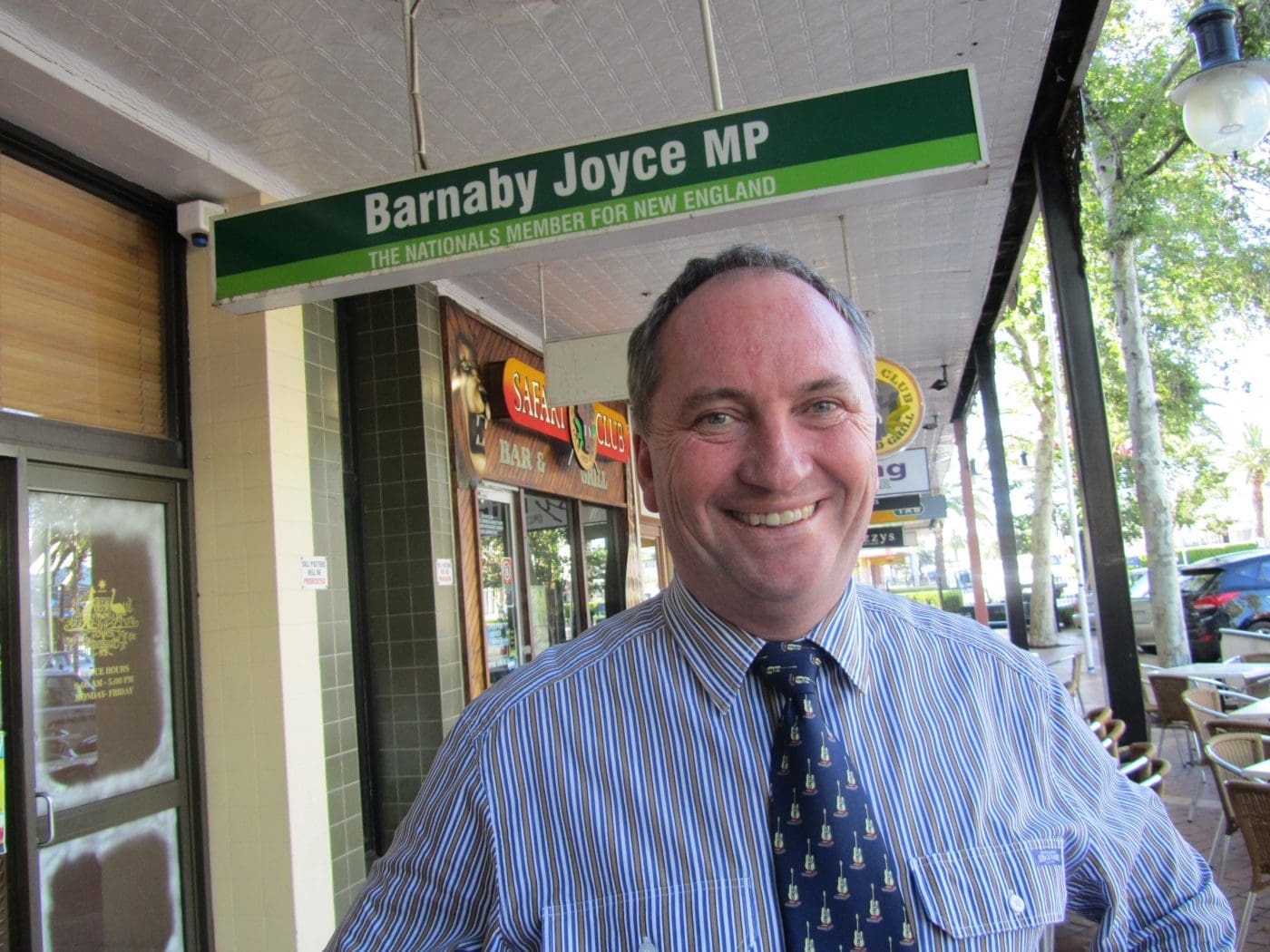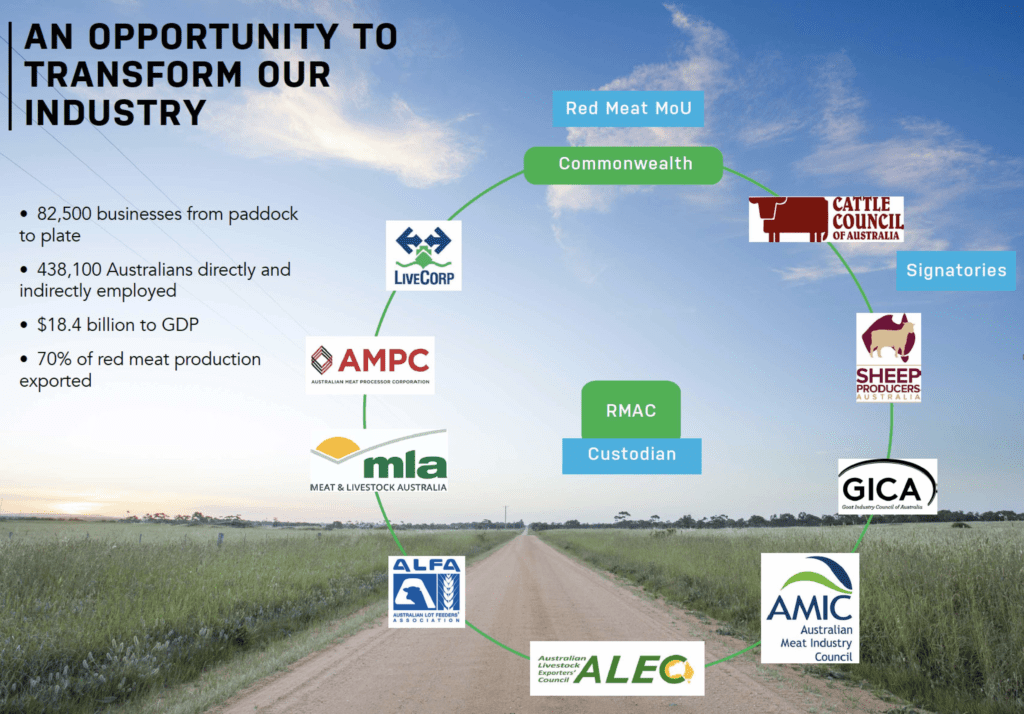A BIG unknown surrounding the red meat MoU review process currently underway is where the Federal Government stands.
The Commonwealth is an important player in the reform process for two key reasons: it is a major contributor to red meat industry research through matching dollar-for-dollar funding, and, because the restructure proposed in the white paper involve changes to levy flows, and therefore changes to legislation, the reforms would also need Government support to enact.
The white paper recommends that all red meat levies (cattle, sheep and goat transaction levies, red meat slaughter levies and live animal export levies) be reallocated from the research development corporations Meat & Livestock Australia, Australia Meat Processor Corporation and Livecorp into a new body to be called Red Meat Australia, to serve as a powerful single voice for the entire red meat sector.
Achieving changes to levies has never been an easy process, as highlighted by industry feedback to a Senate inquiry into agricultural levies in June 2015. “Extremely difficult, arduous, exhaustive and expensive” were words various peak industry councils used to explain their experiences trying to make even minor adjustments to levies, largely because of the number of pieces of regulation in which levies are enshrined.
Changes to both “primary and subordinate legislation” would be needed to enable the type of reform recommended in the white paper, a Department of Agriculture spokesperson said in response to Beef Central’s questions last week.
What is also not yet clear is what level of levy payer support for the final red meat restructure proposal (the white paper is still out for industry feedback) will have to be demonstrated for the Government to support it.
Task force chair Jim Varghese told Beef Central at the release of the green paper that it will be up to RMAC, the peak industry councils and the Minister of Agriculture of the day, to consider what action should be taken after his white paper recommendation is released.
A timeline contained in the Red Meat White paper document says the next step after the current consultation phase of the white paper will be to create a transition taskforce, and for the NewCo 1 (the new super overarching red meat body currently referred to as ‘Red Meat Australia’) to be launched by 1 July 2020.
The green paper/white paper process has provided widely-advertised opportunities for every levy payer to contribute and have their say.
Whether the Government will accept the outcome of this process as constituting adequate industry consultation or whether it will still require a ballot of levy payers, as occurred when the cattle transaction levy was increased from $3.50/head to its current rate of $5/head in 2005) is yet to be clarified.
The Department of Agriculture’s Levy Principles and Guidelines state that changes to levies cannot take place without demonstrated levy payer support.
“For a levy proposal to be considered by government, industry must show that there is majority support from actual and/or potential levy payers,” the document stipulates.
‘A majority’ is defined as “50 percent plus one of the voting allocations of those producers who choose to vote in a levy ballot” or 50 percent plus one of producers, if the vote is conducted on a one-vote-per-producer basis.
Asked what industry would be required to demonstrate before proposed changes to existing levy flows take place, the Department of Agriculture’s response to Beef Central pointed to a need to demonstrate “majority levy payer support”.
The input of, and support from, levy payers and producers was a critical part of any future red meat industry structure, the Department statement said:
“The nature and level of industry support required to agree to implement a proposal is a matter for the Minister and government.
“It is long-standing government policy that majority levy payer support be explicitly demonstrated for changes to levy arrangements.”
Should an industry advocacy body receive levy funding?
Whether the Government will allow a single organisation to collect all industry levies and perform an industry advocacy role, as recommended in the white paper, is another point in question.
 Former Agriculture Minister Barnaby Joyce previously rejected a 2014 senate inquiry recommendation for the grassfed cattle sector to establish a new organisation that would receive all grassfed cattle transaction levy funds and also advocate on behalf of the grassfed industry.
Former Agriculture Minister Barnaby Joyce previously rejected a 2014 senate inquiry recommendation for the grassfed cattle sector to establish a new organisation that would receive all grassfed cattle transaction levy funds and also advocate on behalf of the grassfed industry.
Mr Joyce explained at the time that statutory levy funds were classified by Government as tax revenue, which limited how they could be used. An organisation funded by statutory levies would be beholden to the Federal Government and unable to freely express its views without fear or favour, not a desirable outcome for an industry organisation, he warned.
(One exception to this was Australian Pork Limited (APL), created in 2000 from combining the Australian Pork Corporation, the Pig Research and Development Corporation, and the Pork Council of Australia. APL receives and controls statutory pig slaughter levy funding for research and marketing, but is also responsible for strategic industry policy development and advocacy. https://australianpork.com.au/about-us/australian-pork-limited/.)
AFI report comes to light
In recent months the recommendations of an independent industry funded report completed in December 2016, but only recently made available to the broader industry, have just come to light.
The report, prepared by Australian Farm Institute, recommended, in contrast to Mr Joyce’s position, that statutory red meat levies should be used to fund industry policy analysis, strategic planning, performance monitoring of levy-funded industry service organisations and potentially also policy planning and industry advocacy, but not “agripolitical” activities.
The AFI report was commissioned in 2016 by RMAC with funding from the Red Meat Industry Fund, reportedly at the request of Mr Joyce.
The report was handed to Mr Joyce’s office by RMAC upon its completion by AFI in late 2016. However the report sat in the Minister’s office without being released for more than two years. A few months ago, with the MoU review process pushing into the next phase, the RMAC board made the decision to publish the report on its website.
Perhaps it was that the findings did not fit with Mr Joyce’s position that explains why it was not released by his office, but the executive summary of the AFI report can now be found on the RMAC website https://rmac.com.au/policy-leadership/submissions-2017/.
Where does Bridget McKenzie stand?
Attentions now turn to where Federal Agriculture Minister Bridget McKenzie stands on questions such as whether a single organisation should be able to receive levies and perform advocacy duties, as the white paper recommends.
The Minister has yet to give an indication of her position on the reform proposed in the white paper.
After its release she issued a statement thanking the work of RMAC and the independent review taskforce led by Jim Varghese in “addressing a number of long-standing concerns around funding and representational issues the Government has had about the red meat sector, and which have also been raised in a number of Senate inquiries”.
“Industry and taxpayers alike deserve to have confidence in the agriculture levy system, and in the bodies that monitor this investment.
“The Minister is pleased that the RMAC have led an assessment of their structures, and will be considering the recommendations outlined in the White Paper in a broader reform agenda.”
In response to questions from Beef Central about whether the Minister supports the recommendations made in the AFI report, the Minister’s office passed the inquiry on to the Department of Agriculture ‘as the responsible department’.
The Department’s response referred questions relating to the AFI report to RMAC, and summarising the white paper process to date:
“On 4 July 2019 RMAC released a White Paper that sets out proposed reform to the red meat sector’s current governance arrangements.
“This report was developed by an independent taskforce following extensive stakeholder consultation and would provide a more contemporary perspective from the industry on its governance and funding arrangements.
“The department understands RMAC is consulting with the industry on the White Paper ahead of providing a reform proposal to government.”
In comments to Beef Central RMAC independent chair Don Mackay said the review taskforce led by Jim Varghese spent a significant amount of time with the Department of Agriculture to check the regulatory environment to ensure it didn’t recommend things that weren’t technically possible.
On the question of demonstrating industry support for the reform proposal, Mr Mackay said it was clear the whole of industry had been calling for reform. “I don’t think there is anybody who is at odds with that,” he said.
“We’ve been working with the Department and the Minister’s office right through the process and we have continued to do that,” he said.
“We are not aware of what they may require, broad consensus of industry or whether they would need something more than that, we don’t really know.”
Mr Mackay said there was an active dialogue occurring throughout the industry with varying views on the white paper’s recommendations and ideas on refinements, which he encouraged.
He urged individuals or groups to take this opportunity to provide their thoughts on improvements or alternative solutions.
In particular he urged groups to ensure that what they were asking for was achievable, and within the limits of what levy funding can be used for and the rules of independent governance.
Mr Mackay said the restructure proposed in the white paper provided a direct line of sight for a board to have influence over how levy funds are invested. The model was also in line with AFI reports recommendations that development of policy and advocating of policy was a legitimate use of levy funds.
“If you can get that level of high level of capacity within Red Meat Australia to develop policy and prosecute the case and be a big strong organisation, then I think the whole of industry is going to be in a better place.”





I fully support the CPA position on the white paper review. levy payers need more of the saying seeing we do all of the paying. Let us hope that the new minister can see through the bull!!!! in this white paper and be guided by the wishes of the grassroots of this industry and fix this imbalance once and for all.
I am a member of Cattle Producers Australia and its model provides free membership to all grass-fed levy payers and it supports a two company model one for advocacy for cattle producers and one for R & D which would collect the levies and allow producers to have a direct say in the research and development. This is a far more appropriate and representative model than what is being offered by the RMAC White Paper and would align with the processor and live export models.
I agree with John Gunthorpe’s comments.
Two Senate enquiries recommended that grass-fed cattle levy payers need a democratic producer owned organisation. The White paper is far removed from that recommendation.
The primary sector is unrepresented – the cattle producers, who pay the levies and are the grass roots of the supply chain, have no say in decision and policy making.
I urge Ms Mckenzie to take the time to communicate with grass-fed cattle levy payers and hear their thoughts.
Difficult to believe that it was deemed okay to sit on the AFI Report for 3 years whilst there has been a strong call for change in the red meat industry. I note on page 6 it says, “A conclusion from this analysis was that the statutory and industry functions performed by the PICs need to be adequately resourced; that these functions are carried out for the benefit of the entire industry therefore the use of compulsory levies or industry funds is appropriate.”
Beef central has published dozens of comments from grass fed producers about the RMAC proposals. Their underlying theme is that the new model significantly dilutes producer influence over the way their levy income is spent. This concern seems well justified, when one considers that under the present arrangements grass fed producers would provide around 70% of the income of the new body. RMAC needs to address this or the Minister should intervene to stop the proposal going any further.
However there is a second question, not addressed by RMAC , not addressed by the producer groups in your comments, and financially more important to the grass fed industry;
“to what extent does grass fed levy money spent beyond the farm gate actually benefit the grass fed producer?”
To what extent does all the MLA’s international representation, domestic and international marketing programmes, promotion funds, etc actually help the grass fed producer? Or is this simply another example of the producers subsidising the processors, exporters, and domestic retailers? The international exporters already have offices around the world, the domestic supermarkets have their own marketing programmes, the small butchers can raise their own levies – why do producers pay their promotional bills? We do not own the product after the knocking box, so the only way the benefits of these programmes can flow back to producers is via the price. Where is the evidence of higher returns to producers.?
RMAC has opened this “can of worms”. Now the debate should be expanded to consider whether all the R&D funds should be concentrated on lowering on-farm costs, and increasing on-farm profitability – the original purpose of the R&D schemes.
The 2016 AFI report states that “Any advocacy model that does not involve strong networks of members which deliver benefits at a local level does not appear likely to remain sustainable.”
What happened to the comments on this story? I see 6 are mentioned.
The White Paper is not a paper for producers. They seem to be irrelevant to a monolithic proposed structure.
Don McKay rightly says that there is no argument about the need for reform. However, the difference between what the White Paper proposes and what producers asked for over two Senate Inquiries is stark.
More democracy is not evident. Nor is there more transparency in spite of claims that there is a clear line of sight to the Board.
While calling for comments from the public, Mr. McKay’s comment that, ”he urged groups to ensure that what they were asking for was achievable, and within the limits of what levy funds can be used for and the rules of independent governance,” points to the change you have when you are not really having a change and that levy payer governance is not a reasonable request.
If the paper is recommending the use of levy fund for advocacy it is certainly not evident that livestock PICs will be a beneficiary of such funds.
Instead, the head of power seems to reside with Red Meat Australia which will be a mega organisation of all sectors of the red meat industries along with the entirely normal commercial conflicts between for example, producers and processors. Nothing in the document resolves these conflicts. Instead, a commitment to “whole of supply chain” philosophy glosses over such conflicts.
Thank goodness that the Levy Principles and Guidelines require that, “For a levy proposal to be considered by government, industry must show that there is majority support from actual and/or potential levy payers.”
There has been limited debate in rural newspapers since the release of the White Paper, and nothing less than a vote or a plebiscite following such widespread debate will be acceptable to demonstrate the necessary support.
The claim that stakeholders have been widely consulted does not pass the pub test with many cattle producers at the Brisbane Exhibition unaware of the White Paper nor the leadup to it.
As a contributor to the previous senate enquiry into the grass fed beef sector I am compelled to comment on this new RMAC initiative to completely reverse and undermine the 7 recommendations put forward by the senate enquiry.
In addition to that there are eight recommendations set out at the end of a Nuffield Report which identify the factors that are essential underpinnings of a successful agriculture advocacy body. They are listed below. Once again the RMAC version for beef producers is in opposition to these principles below.
* Simplified flat fee subscription structures for advocacy groups.
* * Increase membership opportunities for all farmers and associated interested stakeholders.
* * Provide clear opportunities for grassroots members to influence direction.
* * Local branches/committees must remain as they are the foundation of entry engagement.
* * Majority of authority positions to be farmers elected by farmers.
* * Increased investment in farmer facing employees, including regionally based office staff.
* * Employment of locally based territory field managers.
* * Have clear farmer led objectives to explain performance and demonstrate value.
The Current view from many producers including ourselves is that there should be 15 regional areas across Australia where policy decisions are made enabling proper representation from the farm gate to the top industry bodies. Under the new structure proposed all farm gate representatives are deleted.
From our perspective as fairly large scale beef producers this new structure proposed by RMAC will take us from the frying pan to the fire.
Consultation with the wider industry was sought through an opportunity to submit proposals for the restructure. Of the 50 published submissions only two give any support to the Red Meat Australia proposal. If the committee are genuine in listening to the bush then it should be abandoned.
Without producers there is no red meat industry .We have been completely forgotten by the current structure and even more so by this new crazy proposal.
Rural Australia is dying.Tabaco industry gone ,pork industry gone, dairy industry going. We once had a herd of 32 million cattle we now have probably 22 million left. We once had a flock of 185 million sheep we now have 62 million left.
Barnaby Joyce made a promise to implement the 2014 senate recommendations but backed down.
We live in hope that the new Ag Minister shows some strength and gives back control of the levies to the people who are forced to pay them.
On the question of demonstrating industry support the reform proposal, Mr Mackay is quoted as saying the whole industry has been calling for reform, he is completely right, however the question must be asked, how many in the industry support the White Paper, which is miles away from the seven recommendations made by the Senate.
Mr McKay we are not aware of what they may require,(I presume he means government) broad consensus of the industry or whether they would need something more than that we don’t really know.
Could it possible to actually get Mr Mackay and his board, to hold meetings around the country so that the people doing the paying can actually do the saying, surely we don’t need more taxation without representation.
As a beef producing levy payer, I am vehemently opposed to the recommendations of the White Paper. Levy payers need to be in control of the spend, and the White Paper does not allow that to happen.
I urge Minister McKenzie to communicate and seek feedback from our producers, particularly our family cattle businesses. I urge her to communicate with all producers, not just SFOs and Peak Councils.
At the moment, it would have to be said that at least in Queensland, there has been very little public discussion about the White Paper recommendations and Red Meat Australia. In each state/territory there needs to be at least 3 geographically chosen locations where public meetings are called and open discussions about the concept is initiated. Huge areas of cattle country are in the depth of drought, we can’t expect producers to travel big distances and be away from home too long.
We all know that when this drought ends, cattle, especially female cattle, will be in short supply, as Australia begins rebuilding it’s herd. Our industry has never been in the position it currently faces, as a result of drought and flood devastation. Beef cattle producers need to be in control of every dollar collected through our levies and where they are allocated.
Thank you James for pointing out that any change under the Levy Principles and Guidelines requires a majority of levy payers to agree with the change. Talk around the Ekka and in the bush is that this grab for cash by those who gave us J-BAS, biosecurity plans, audits, re-accreditation payment of $66 for LPA, and many other crazy ideas that heap costs on our businesses and give nothing in return, are in for a surprise if they are ever game enough to conduct a ballot to seek approval to their latest loopy ideas contained in their White Paper.
There must be no tax without representation. Grass-fed cattle levies are compulsory and are therefore a tax on our industry. Cattle producers must have the ability to elect those who represent us and make decisions about how the levies are to be spent. Our board must be a majority of cattle producers. The organisation must be owned by the cattle producers and a new company is needed to receive the levies and then decide how they are to be spent on research and marketing.
RMAC are so wide of the mark in their White Paper it wold be funny if it was not so serious. The 2014 Senate Report recommended RMAC be disbanded and from the quality of this offering in the White Paper we can see why.
Daniel Meade in his Nuffield Scholar Report, after exploring farmer organisations worldwide, said for these organisations to succeed they should provide clear opportunities for grassroots members to influence direction. He also recommended the majority of authority positions to be farmers elected by farmers. There is also a need to increase membership opportunities for all farmers and associated interested stakeholders. RMAC fail on each of these and will send our industry into the dark ages if they are allowed to realise their dream for continuity on the gravy train.
In the glossy publication sent around to cattle producers there is no mention of cattle producers. Over $500,000 must have been spent on this exercise and again no benefit on farm. I fear they used our levies (or monies rightly destined for distribution to industry members) to fund their wasted effort.
There is no support for the RMAC proposals in the bush. We ask the Minister to stop this charade and expose it for what it is – an attempt by those who have damaged our industry over the past decade to hold onto, and increase, their power. Please put an end to it now so no more of our levies are wasted by RMAC and their member peak industry councils.
Australian Cattle Industry Council